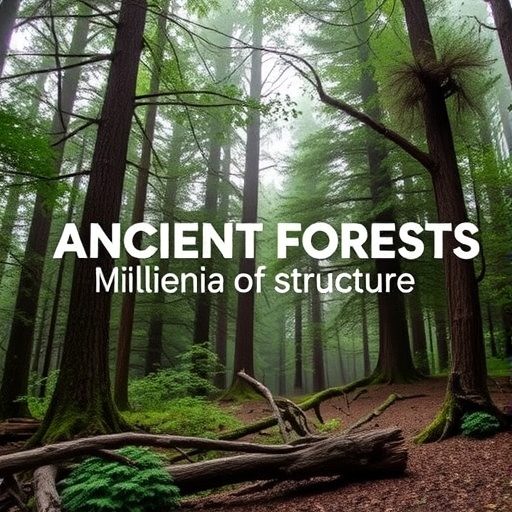In a groundbreaking study, researchers have delved deep into the intriguing world of primary old-growth forests, revealing the intricacies that govern tree longevity and the unique ecological features these ancient habitats possess. This meticulous investigation, authored by renowned researchers Pasques and Munné-Bosch, underscores the complexity of these forest ecosystems and how they have evolved over millennia. The study highlights the interplay of various factors that contribute to the lifespan of trees, showcasing an ecological masterpiece that has been shaped by time.
Old-growth forests, often regarded as the jewels of nature, are ecosystems that have achieved a state of stability and resilience through countless years of natural evolution. These forests characterize specific habitats that have remained relatively untouched by human activity, allowing them to develop intricate relationships with their environment. The research contends that these complex habitat structures foster not only tree longevity but also create rich ecological niches that house diverse biodiversity.
One of the key findings of this study is that the structural complexity of old-growth forests plays a pivotal role in promoting extreme longevity among tree species. The various layers of vegetation, from towering trees to understory plants, contribute to a microclimate that protects trees from extreme weather conditions such as wind and drought. This layered architecture serves as a protective shield, enhancing the ability of trees to withstand various environmental stresses, thus extending their lifespans significantly.
Moreover, the study elucidates the significance of soil composition and nutrient availability in these ancient forests. Over millennia, the accumulation of organic matter and the intricate soil food web have resulted in rich, fertile soils that support the growth of long-lived tree species. The researchers demonstrate that these soil characteristics are instrumental in sustaining the health of the trees, as they ensure a steady supply of nutrients that are vital for their growth and vigor.
In addition to soil and structural complexity, the authors emphasize the role of biotic interactions within these ecosystems. The relationships between trees and various organisms—including fungi, microbes, and insects—are highlighted as crucial components that facilitate nutrient cycling and enhance tree resilience. The symbiotic association with mycorrhizal fungi, for instance, allows trees to access scarce nutrients in the soil, further enhancing their longevity and overall health.
The study also sheds light on the ecological services that old-growth forests provide, which extend far beyond mere timber production. These forests act as carbon sinks, sequestering vast amounts of carbon dioxide from the atmosphere and mitigating climate change effects. Furthermore, they play a critical role in regulating local water cycles and maintaining biodiversity, serving as habitats for countless species, some of which are rare or endangered.
The authors argue that the preservation of these ancient forests is vital for both ecological and climatic stability. As human impacts on the environment continue to escalate




